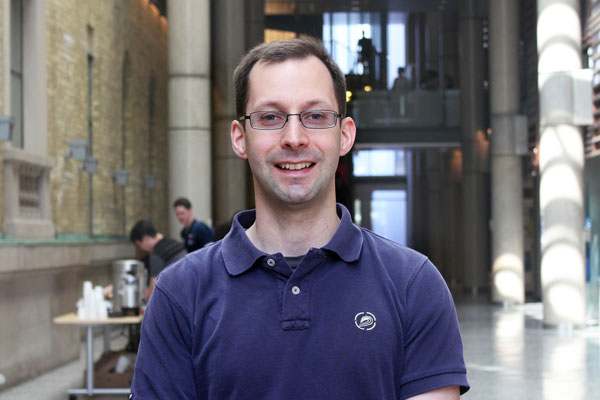 July 27, 2016 — Professor Scott P. Sanner, an international expert in information engineering, joined the Department of Mechanical & Industrial Engineering on April 1, 2016.
July 27, 2016 — Professor Scott P. Sanner, an international expert in information engineering, joined the Department of Mechanical & Industrial Engineering on April 1, 2016.
Sanner’s research harnesses the power of computers and big data to make decisions faster, and sometimes better, than humans can. His work in hot fields such as machine learning and artificial intelligence can be applied to make cities smarter, including optimizing transit and transport networks, improving energy efficiency of buildings and anticipating surges and dips in demand for services.
Sanner has held prestigious research and teaching roles around the globe. Prior to joining U of T Engineering, he held positions at Oregon State University, National ICT Australia and Australian National University. He completed his undergraduate degree in computer science and electrical and computer engineering at Carnegie Mellon University, his master’s degree at Stanford University and PhD at the University of Toronto, both in computer science.
Writer Liz Do sat down with Sanner to learn more about his research, teaching and hopes for the new role.
What are you most looking forward to in your new position?
I look forward to working with amazing U of T students and my fellow faculty members to help create the future of smart cities.
Why did you choose to join U of T Engineering?
I earned my PhD here at U of T, and my reasons for coming here as a student are the same reasons I am excited to return as faculty: world-class research achieved by world-class faculty and students. But most importantly, there is something unique about U of T that attracted me back after nine years away: the mutual friendliness and approachability of faculty members and students makes U of T a nurturing place for creativity and innovation that has shaped — and will continue to shape — the global research landscape.
Tell me about your research.
Have you ever waited at a red light or crosswalk signal when there are no other cars around and wondered why? While sensors now collect massive amounts of data on all aspects of urban systems, this data is not exploited to its full potential. High-fidelity predictive models are not learned from this data, nor is it possible to optimize decisions in such complex learned models in real-time. My research aims to develop novel machine learning and optimization methods to make our cities smarter.
How could your research change the modern city?
The impact of learning high-fidelity predictive models of urban systems from vast quantities of sensor data and optimizing these models in real-time is far-reaching: our buildings will use less energy, our traffic will be less congested and pollution can be reduced, while government services will be better able to anticipate our needs before we even approach them.
What difference do you hope to make with your research and teaching in the next five years?
I want to incorporate cutting-edge technologies from my research into the classroom so that students entering the workforce are trained and equipped with the latest advances in their fields. There is no better method to create smarter cities than by equipping students with state-of-the-art skills in smart city technologies and having them transfer these technologies to government and industry as forward-thinking employees.
As a new professor, what one piece of advice would you give to new students?
To paraphrase advice I heard from John Perry at Stanford: take time to explore and determine who you are and what you really care about. It will be much more expensive to have a nervous breakdown in your 50s than to find out who you are while you’re at university.
